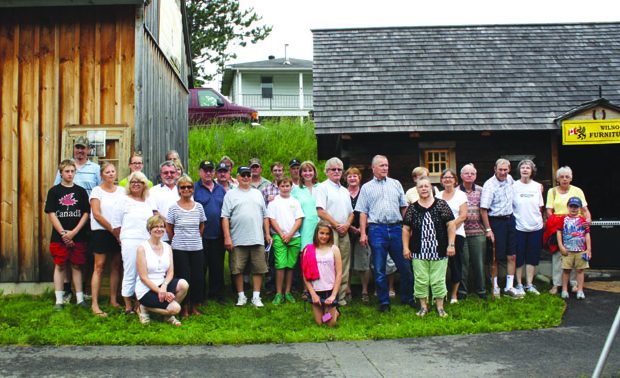Wilno – On July 7, the Polish Kashub Heritage Museum in Wilno held its official opening of the Wilno Furniture Maker’s Workshop Display.
Several community members and local furniture makers, cabinetmakers, collectors and cultural admirers gathered on the Sunday afternoon to celebrate the official opening, and Wilno’s unique heritage.
“Telling the story of Wilno Furniture at the Polish Kashub Heritage Museum in Wilno has always been a priority,” Curator for the museum Shirley Mask Connolly said.
By definition, Wilno Furniture is handcrafted pioneer furnishings that were unique to the First Polish Settlement area and are made with styles learned in the Pomeranian homeland, in the Kashubian and Kociewien regions.
“When the Kashubs first settled in Renfrew County, they lived a life of total subsistence on the land,” according to the Polish Kashub Heritage Museum. “They built their homes from the pines that towered over them, at the same time clearing fields in the forest. They furnished their homes with homemade tables, chairs, benches, dish dressers, cabinets, chest, cradles and beds.”
Such furnishings were generally made of pine, as history describes and hand hewn by broadaxes and hand planed, and crafted into utilitarian pieces.
In the past, most families made their own furniture, the curator says, however, only a few of the first Polish Kashub settles were carpenters on the Canadian Census records during the 19th century.
Yet, those few, whom were actually cabinetmakers and furniture builders, had an everlasting impact. And so, the newly unveiled display in Wilno stands to pay tribute to the original Wilno cabinetmakers.
Some of more well-known old-fashioned carpenters included, John Kosloski, for instance.
History describes Kosloski as a very skilled furniture maker. He resided in Wilno in the mid 1870s until the early 1900s. During his time in the First Polish Settlement area, he created an array of furnishings.
“Kosloski made a big impact on the furniture of the Canadian polish settlement because he had a very busy workshop and a number of pieces are attributed to him,” the Wilno Museum outlines.
What’s more, there’s also evidence he had many helpers and apprentices during his time in the First Polish Settlement area. Some of the apprentices and helpers included, his second wife’s nephew, Frank Lipinski. Others recorded were John Chippior, Vincent Chapeksie and perhaps Frank Voldock.
But Kosloski isn’t the only acclaimed furniture maker to have had an impact.
Story continues in the July 10, 2013 issue of The Valley Gazette.
